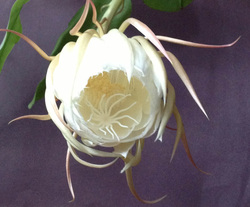
|
Gina in Spokane — a grandmother of 14, quilter, former nurse, and booklover — asked me to answer a few questions in advance of her book group discussion of Marmee & Louisa, and I decided to post our exchange here.
Q: How do you organize your day so you can find the time to research, write, re-write and re-write & then promote books? Which part do you find the most satisfying or enjoyable? A: When my kids were small (the youngest is now 12), I worked only when they were at school or daycare (part-time) or with a babysitter (very part-time), so I had only 15-24 hours a week in which to think about my work. That lack of time focuses the attention! Now I have more freedom because they can keep themselves alive. I’m fortunate that my husband does all the cooking and food shopping for our family. A few years ago, for an essay collection called Why I’m Still Married, I wrote an essay about our marriage entitled “18,260 Breakfasts,” which has been reprinted in the textbook The Aims of Argument. On the rare occasion when I’ve had to spend a week in England to research a book (which happened with Salem Witch Judge and American Jezebel), my husband took a week off from work to be with our children. A freelance writer with a family needs a spouse with a salary, unless one of them has a trust fund! As for which part I find the most satisfying, I enjoy all aspects of writing, from research to promoting books and talking with readers. One of my favorite times is toward the end of the actual writing, when you are really inside the book and can see it whole but it is not quite there yet. The book itself takes on a life of its own, in a way that it doesn’t have once it’s published. Q: Writing about interesting ancestors, I can understand that, but why did you write Seized? A: In the thirty years I’ve been writing nonfiction, all my articles and books have been motivated by the question: What do people do, and why do they do it? The subject of Seized was a brain disorder linked to personality change, which fascinated me. The fact that many famous artists — including Dostoevsky, van Gogh, and Lewis Carroll — had been diagnosed with the disorder, temporal lobe epilepsy, and used it in their creative work, was also a big draw. Q: Of all the writings of Abigail and Louisa, do you have a couple of favorites? A: I love Louisa’s Eight Cousins, Jack and Jill, some of her stories (such as “My Contraband”), and her journals, which are published. From Abigail’s writings, which were published for the first time last year, I love a letter she wrote at age eighteen to her parents, informing them, “I am not willing to be found incapable of anything.” She sounds so much like Jo March! I love reading her many letters to her brother and great supporter, Rev. Samuel Joseph May, which are in My Heart Is Boundless, the companion volume to Marmee & Louisa. My Heart Is Boundless contains the collected papers of Abigail May Alcott, never before published, which have been hiding in plain sight for more than a century. Q: What’s next on your writing agenda? A: I wish I knew. Some writers have the next book proposed and sold before the last book comes out, but I’m not that type. Having just finished a triptych of sorts, on three ancestors, I am looking for a new subject. Any suggestions? Thanks so much for reading and discussing my books. |
AuthorEve is the author of Who Needs A Statue?, Seized, American Jezebel, Marmee & Louisa, and Salem Witch Judge. Archives
July 2024
Categories
All
|

 RSS Feed
RSS Feed